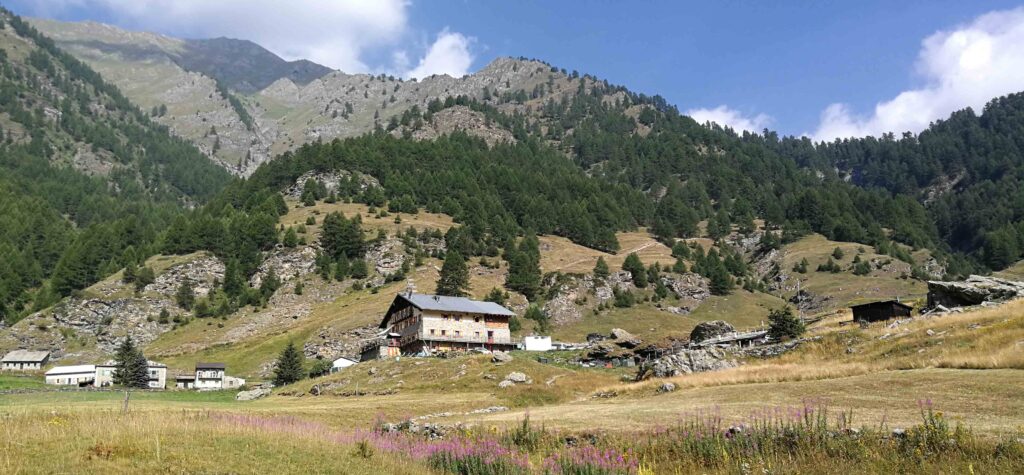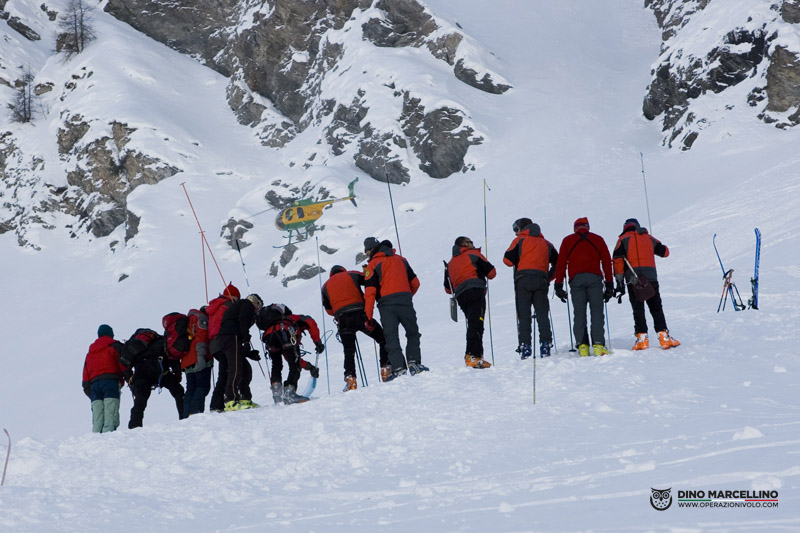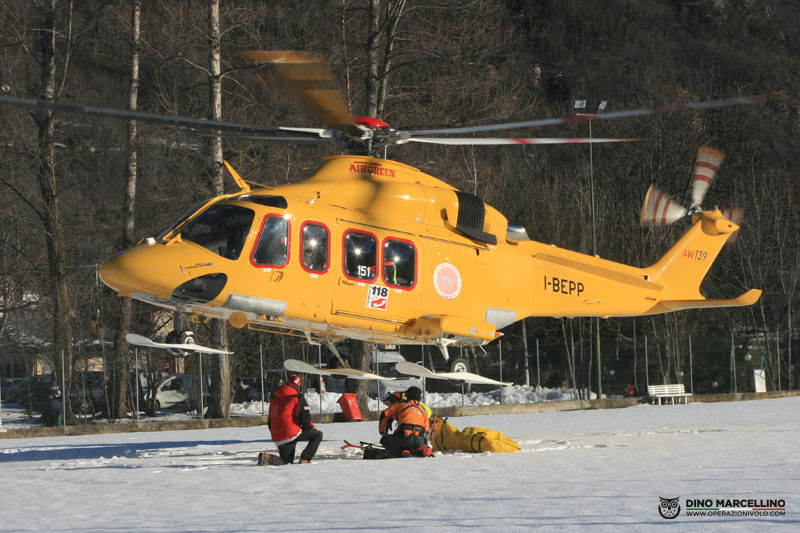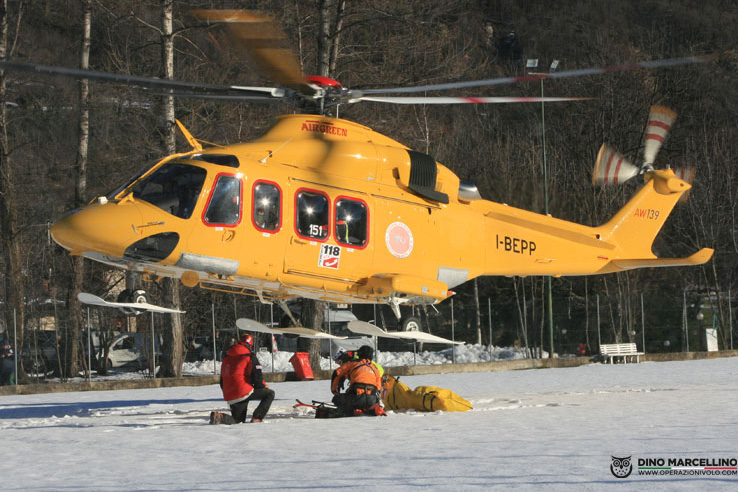A RACE AGAINST TIME. Without entering into too much detail of individual skills and abilities I can explain that the HEMS is a complex organization, and that many forces can be deployed in an emergency. Almost all of the missions have a positive outcome, but unfortunately events occur that affect each effort, even those of real taskforces who quickly mobilize to save people as quickly as possible. The following story is an example and tragic testimony of how it is possible to learn from a tragedy.
A race against time. The first week in December 2008; the western Alps have been whitened by the first winter snow. The snowfall was followed by two days of strong wind and finally the weather forecast spoke of sunny settled weather for the long weekend (to celebrate the immaculate conception of the Virgin Mary).

For fans of snow sports, ski season finally starts. But only the designated skiing tracks should be used because skiing on fresh snow, off the prepared tracks, can be dangerous. In fact the old mountaineers know well that it is better to ski late in winter, when the snow is well settled. Strangely this advice was not considered by four friends, all experienced skiers and all trained in extreme-skiing and one of them also a mountain guide. So the group organize a challenging excursion in Pellice Valley, at the Italian-French border, with the intention of reaching the border crest at a medium altitude of 2800 meters and then skiing down the steep, narrow, vertical and prickly canyon.

They spent the previous night at the Pellice Valley lodge named Willy Jervis, at an altitude of 1732 metres, and the following morning set off for the day. It was a long walk on snow along the bottom of the valley and then a tiring climb up the mountain face, with crampons and skis on their shoulders. When they were a few metres from the top a plate of snow and ice fell into the gully. For the four friends there was no way out; they were dragged and knocked against the rocks for 500 meters. Early in the afternoon the manager of the Willy Jervis lodge, who knew when they were due to come back, didn’t see them launch the alert to the rescue organization, and tried to reach the avalanche area himself. It is difficult to do on foot on fresh snow and takes a long time; precious time for the four friends because the average time to survive in an avalanche is from 30 to 60 minutes. So after considering location, distance and the difference in altitude from the impact and the final front of the avalanche, it appeared evident that finding survivors was hopeless; however the rescue mission was launched.


The mobilization
The Mountain Rescue National Corps CNSAS and the Guardia di Finanza Mountain Rescue SAGF deploy 60 rescuers, canine units and a mobile truck equipped with a radio and weather station to be used as the coordination centre. In a race against the time three helicopters have been deployed to transport people and equipment and to monitor the area and search by air. An AW139 operated by Regional 118 HEMS, a Lama operated by Airgreen and a NH-500MD operated by the Guardia di Finanza Venegono Air Section.


It was a battle against time; in December the days are the shortest of the year, and the forecast predicted that a new problem would arise in 36 to 48 hours. The AW139 took part in operations at the first stage and was very effectiveness in a transport role thanks to its spacious cabin used for cargo. From the base-camp, established on a little football ground in the Bobbio Pellice village, the AW139 transported many rescuers and equipment to the site of the avalanche. It was flanked by the other helicopters mentioned. A real aerial ballet took place, with continuous comings and goings allowing all rescue teams to be deployed. So in the few hours of light left that afternoon it was possible find two of the missing people, unfortunately both died.


Hoping that the other missing people were carrying personal locator avalanche beacons (the ARVA) the AW139 flew over the area trying to pick up any signals. To do this they used a Barryvox VS2000Pro receiver which was suspended a few meters under the AW139. The mentioned receiver has to be used externally so that its electromagnetism doesn’t disturb the onboard equipment. No signals were detected. Just before night fall, an object is seen in the ravine, high in altitude, but it is much too dangerous to go at night, so it was decided that they would wait for first light of the next day.

The next day the first step was to identify the object; it was revealed to be a boot. Now the problem is that getting there is very dangerous, and if the third missing person is under the snow how do they recover him? It is an operation that requires the use of two or more rescuers for a lengthy amount of time. It is impossible to climb the slope as it has a very high gradient and an unstable surface so there is danger of other avalanche. Also it is too dangerous to use the winch as in a normal rescue. The risk is much too high when you consider that there is no possibility of finding the person alive. The solution is found through a discussion between the rescuers and the AW139’s crew. Thanks to their respective experience they agree to an unusual plan.


The pilot, Ivo Airaudi (owner of the Airgreen Company and himself an experienced pilot), remembers the following; “I have to say that the idea of hovering for a long time and winching in that dangerous funnel was not an attractive prospect!” We decide to first fly a reconnaissance of the ravine, from its base to the top, to detect any dangerous heaps of unbalanced snow. In fact on some ridges the snow-mass was impressive and we decide to hover at a low level over them, so that the rotor blade downwash and vibrations will cause the separation of any unstable portions. But nothing happened. The slope was in shadow and being early in the morning the temperature was very low (below zero). This was encouraging; the next step was to put two sentries in a safe place from which they can observe the operation area and, being in radio-contact with helicopter, eventually launch the alarm if there is any movement of the snow.

The rescuers choose to operate with two men, both staying tied-up to the winch to assure the highest level of safety during a long period of hovering (more than 10 minutes). To ensure maximum freedom of movement the rescuers prepare two long longes (shaped lanyard) for each-one, with a shock absorber between the winch and longe. If there is an avalanche the helicopter will be able to lift them immediately by simply gaining altitude. This also ensures that the rescuers are able to free the corpse from the icy grasp of the snow and recover it. The pilot gives us some interesting considerations; “Thanks to the power of the AW139 I have been in the green arc of power during the whole flight, so I have been able to operate without limitations on time. The flight parameters of the AW139 give me the certainty that I can maintain hovering with only one engine.”


Qualities which I experienced when the helicopter flew just meters from the slopes, and also when it deposited me very near the rescuers at work in the avalanche. When I jumped into the snow from the helicopter whilst it was hovering I had no particular problems except for the snow raise by the downwash. But I was unable to get away rapidly because I was plunged into the snow up to my waist! That was a problem for me and my cameras!

From the helicopter we had a clear panoramic view of the avalanche area and the pilots can give directions to the men on the ground on how and where to move. In this case the observation from the air was indispensable because the avalanche, at the end of the canyon, split into two branches, and the second of them was small and not easily visible from the ground. The fourth skier was found on the third day of searching, just before the arrival of a new heavy snowfall which resulted in four meters of fresh snow. If the body was not found then there wouldn’t have been another opportunity until the summer.
If you want to increase your knowledge on the HEMS activities and on the organization of some HEMS bases located along Italy, from the Alps to Sicily, as well as read stories of rescue missions, the book “VERTICAL RESCUE” is what you need.
Take advantage of DISCOUNTS: for a preview and more information, visit the BOOKS page on this site at www.operazionivolo.com/en/my-books-3/
and write to me at info@operazionivolo.com
Two other volumes dedicated to rotary wing and air rescue are also available:
– SAVING LIVES The Italian Air Force and Air Rescue.
– HELICOPTERS AT WORK ten aerial works with helicopters



Nota
Se vuoi approfondire le tue conoscenze sulle attività di SOCCORSO E LAVORO AEREO CON ELICOTTERI, in ambito civile e militare, i tre LIBRI attualmente disponibili, editi da Operazioni Volo, sono ciò che fa per te.
APPROFITTA DEGLI SCONTI : Euro 28 / 25 cadauno (anzichè Euro 35 / 32)
– SOCCORSO VERTICALE: l’elisoccorso civile dalle Alpi alla Sicilia
– SALVANDO VITE: le attività di soccorso dell’Aeronautica Militare
– ELICOTTERI AL LAVORO: elisoccorso, antincendio boschivo e molto altro
Per anteprima e maggiori informazioni visita la pagina “LIBRI” su questo sito www.operazionivolo.com/libri-3/
Per l’acquisto scrivimi a dino.marcellino@live.it info@operazionivolo.com






